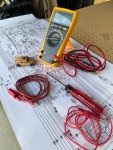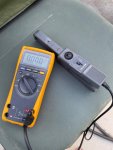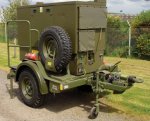papakb
Well-known member
- 2,285
- 1,196
- 113
- Location
- San Jose, Ca
For those people not familiar with HMMWV wiring and electrical systems in general the 24 to 12 converter that MarkM posted is probably the best way to go. This converter draws off of both batteries so you don't unintentionally drain one and it eliminates the problem of accidentally connection your 12v devices across the high side battery. When you do that the ground of your device is still 12v above chassis ground and can short out and cause fires worst case.
These converters are commonly available on auction sites and a simple Google search will get you plenty of results (and prices). The converter MarkM posted is nice because of it's small size, high current output and the fact that it's waterproof, which 99% of them aren't. Couple this to one of the Pulsetech distribution boxes and you have a 12v system with everything fused for safety.
While it's nice to have a dual voltage alternator it's a fairly expensive conversion and again you should have electrical systems knowledge to install one correctly and safely. For most of us out there the 60 amp alternators will provide enough power for your needs. So unless your running massive electrical loads like high power radios or supplemental lighting systems (non-LED) the 60 amp systems are enough. Beyond that they are well understood original equipment and spares are readily available at reasonable prices.
These converters are commonly available on auction sites and a simple Google search will get you plenty of results (and prices). The converter MarkM posted is nice because of it's small size, high current output and the fact that it's waterproof, which 99% of them aren't. Couple this to one of the Pulsetech distribution boxes and you have a 12v system with everything fused for safety.
While it's nice to have a dual voltage alternator it's a fairly expensive conversion and again you should have electrical systems knowledge to install one correctly and safely. For most of us out there the 60 amp alternators will provide enough power for your needs. So unless your running massive electrical loads like high power radios or supplemental lighting systems (non-LED) the 60 amp systems are enough. Beyond that they are well understood original equipment and spares are readily available at reasonable prices.





